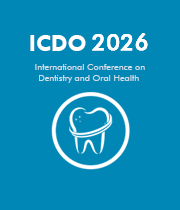Oral diseases
Oral diseases are conditions that affect the mouth, lips, and other parts of the face. These diseases can range from mild irritation to more serious and painful infections. Common oral diseases include tooth decay, gingivitis, periodontitis, and oral cancer. Oral diseases can be caused by bacteria, viruses, fungi, or environmental factors. Tooth decay is the most common oral disease. It is caused by bacteria that feed on the sugars and starches found in food. If left untreated, tooth decay can result in cavities and other dental issues. Regular brushing and flossing, as well as regular dental check-ups, can help to prevent tooth decay. Gingivitis is an inflammation of the gums caused by plaque buildup. Symptoms of gingivitis include red, swollen, and tender gums. If gingivitis is left untreated, it can lead to periodontitis, a more serious gum disease that can cause bone and tooth loss. Treatment for gingivitis includes regular brushing and flossing, as well as professional dental cleanings. Oral cancer is a type of cancer that affects the mouth, tongue, lips, and other parts of the face. Symptoms of oral cancer include a sore or lump in the mouth that does not go away, a persistent sore throat, or difficulty in chewing or swallowing. Regular visits to the dentist can help to detect oral cancer early and increase the chances of successful treatment. Oral diseases can have a significant impact on a person’s quality of life. Regular brushing and flossing, as well as regular visits to the dentist, can help to prevent and detect oral diseases. In addition, avoiding habits such as smoking and excessive drinking can help to reduce the risk of oral diseases.

David Geoffrey Gillam
Queen Mary University of London, United Kingdom
Christopher Turner
Spacemark Dental, United Kingdom




Title : Evaluating hygienist follow up for head and neck oncology patients in secondary care: Results from a two cycle audit
Peter Basta, Newcastle Dental Hospital, United Kingdom
Title : Atypical facial pain unravelled
Christopher Turner, Spacemark Dental, United Kingdom
Title : New treatment of temporomandibular disorder through muscle balance and muscle regeneration by activation of quiescent muscle stem cells( satellite cells) with mitochondrial dynamics
Ki Ji Lee, National Reserach Foundation & Busan Medical University, Korea, Republic of
Title : Cutaneous, Cranial, skeletal and dental defects in patients with Goltz syndrome
Ali Al Kaissi, National Ilizarov Medical Research Center for Traumatology and Orthopaedics, Russian Federation
Title : The nature and management of dental erosion in patients with bulimia nervosa
Maya Fahy, The Royal Victoria, School of Dentistry, United Kingdom
Title : A systematic review on the early detection of oral cancer using artificial intelligence and electronic tongue technology
Maryam, Kardan Dental Clinic, Iran (Islamic Republic of)